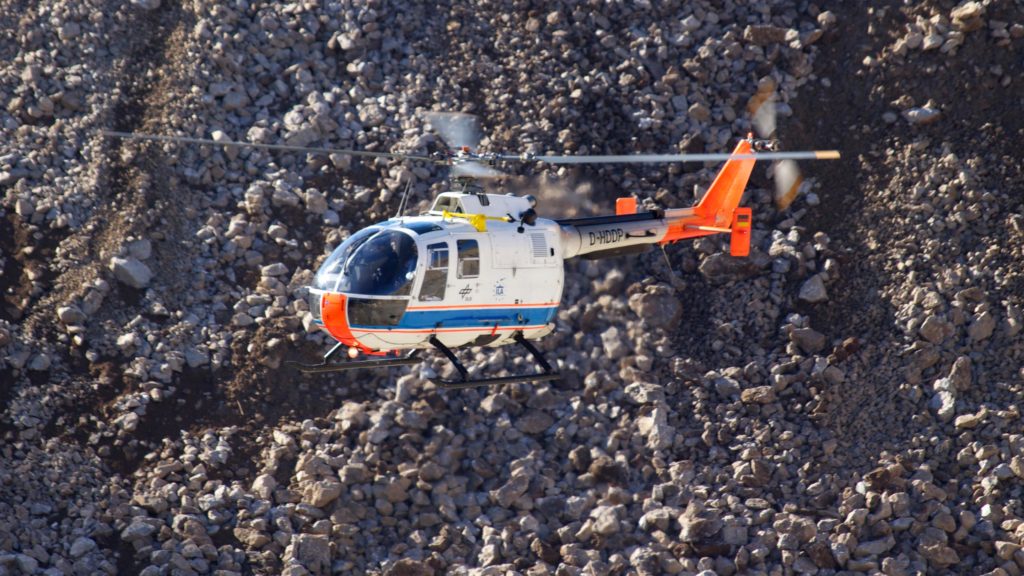Versatile platform for aeronautics research
The BO 105 is a five-seat research helicopter with a rigid, four-bladed main rotor and a semi-rigid, two-bladed tail rotor. All the rotor blades are made of glass fibre reinforced polymers. The helicopter is powered by two Allison 250-C20 engines. Its performance envelope is extensive. This versatile helicopter is used, among other things, for studying flight characteristics, for thermal imaging, as a platform for specialist sensor technologies, for investigations of low-noise approach profiles, for the development of pilot assistance systems and for flights with external loads.
DLR’s BO 105 research helicopter differs from the standard BO 105 due to the availability of external attachment points for payloads such as infrared cameras, as well as an External Mechanical usable Interface (EMELI) Multi Purpose Pylon (MPP). Additionally, BO 105 recently underwent an avionics upgrade to include the installation of a G500H TXi GPS, two cockpit display interfaces, ARINC 429 and radar altimeter interface, GPSS antenna and splitter, and power supply for mission equipment.
An upgrade project is currently running for BO 105 that includes main rotor blades modified with pressure sensors and strain gauges to measure the forces and pressure conditions on the blades, as well as a nose boom with sensor suite for precise measurement of airspeed, angle of attack and sideslip. In the future, the BO 105 will be equipped with an additional INS/GPS for precise flight data and comprehensive data acquisition and management system to provide flight parameters in flight and post flight.
Links:
German Aerospace Center
Flight Experiments
Dr. Burkard Wigger · Email burkard.wigger@dlr.de

